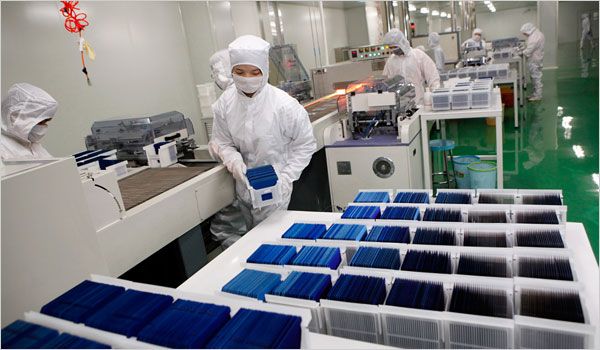Solar manufacturers to invest in equipment
 The last couple years have been hard on solar panel manufacturers and many might not have a lot of capital for equipment upgrades, but they will have to pony-up to compete, according to a report from Lux Research.
The last couple years have been hard on solar panel manufacturers and many might not have a lot of capital for equipment upgrades, but they will have to pony-up to compete, according to a report from Lux Research.
The research and analytics firm released its “Turning lemons into lemonade: Opportunities in the turbulent photovoltaic equipment market” report this week.
Equipment manufactures and innovators will be able to sell their supplies to solar panel manufacturers that have been putting off upgrades through the recent price wars.
“Just selling vanilla run-of-the-mill solar panels will not work anymore,” said report author Fatima Toor. “Differentiation is the key.”
Companies will need to keep innovating and working to increase solar cell efficiencies, according to the Lux Research report. There are a few new technologies or technologies that have gained ground in recent years that will give the manufacturers who invest an edge that distinguishes them from the competition, Toor said.
New solar cell designs like selective emitters and herterojunction with intrinsic thin layer have potential, she said.
CIGS technology will benefit from new standardized equipment that will bring costs down and lower capital expenditures.
And silicon solar manufacturers have to keep looking for new ways to reduce costs. Innovators have introduced several new technologies that limit costly and wasteful wafer sawing techniques, Toor said.
Investing will be hard for a lot of companies, even Chinese solar manufacturers, who have also been hit with oversupply and low prices.
“Certain companies are selling below cost because they have to burn through excess energy,” Toor said.
That’s not sustainable and those companies that can still access capital will invest if they don’t want to be left behind.
Other companies, like SunPower, are still turning profits and have been investing in equipment upgrades to improve efficiencies and bring down costs.
“In the short-term,” Toor said. “It’s going o be existing companies looking at cell design and upgrades.”
Long-term, new manufacturers with technologies might emerge to compete, she said.



